Exposure • Media • Photography • Social Good
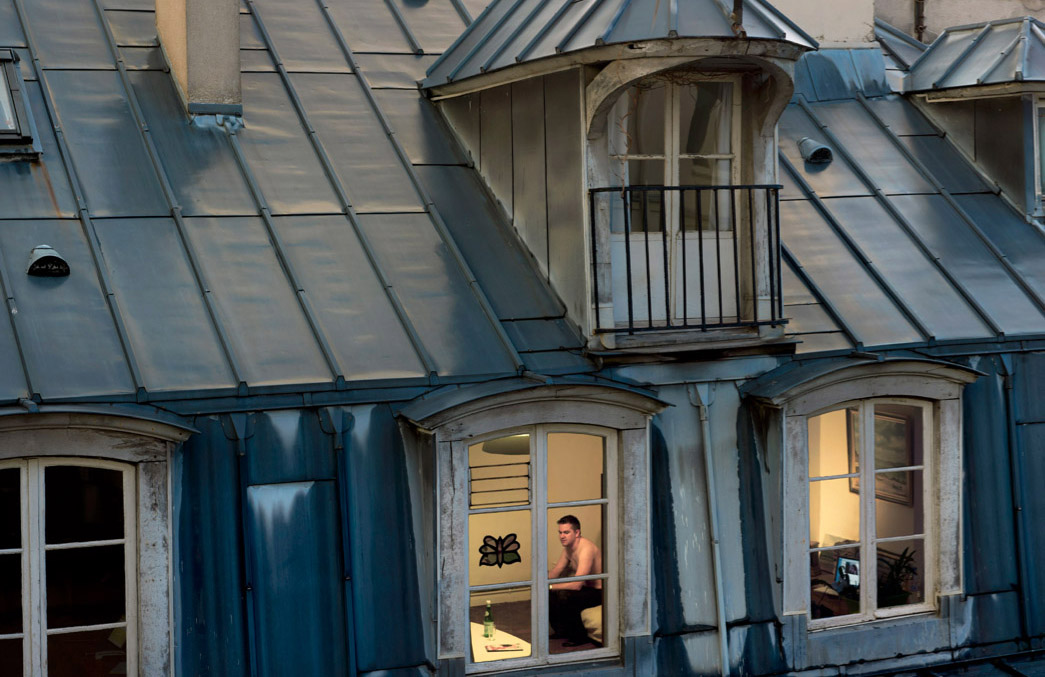
April 21, 2015
Exposure: Rue du Temple, Paris by Gail Albert Halaban

Rue du Temple, 3rd arrondissement, Paris by Gail Albert Halaban. Published in Paris Views, Aperture, 2014
In the TV series Fargo there is a scene where a policeman in his apartment spies on a neighbor through her window. She sees him and responds provocatively to his voyeurism; later, in another window, she sits down to eat with her family. It is impossible not to watch this without thinking of Hitchcock’s definitive Rear Window, where the peeping Tom is a photographer. These stolen glimpses of other people’s lives, framed by a lighted window, contained yet revealed, are charged with photographic possibility. André Kertész’s Portrait of a Woman in Herring Bone Skirt in Window (1961) is a brazen intrusion: covetous, erotic and tender all at once.Â
In Paris Views, Gail Albert Halaban continues the investigation of people seen from their neighbors’ windows that she began with the Hitchcockian series Out My Window, shot in New York (she has a show in May at Edwynn Houk Gallery in Manhattan). I selected this picture because it works at small scale—many need to be seen big—and because Albert Halaban reveals how it was made in a video on her website. In the New York pictures, she was present at the scene. Unable to travel abroad for family reasons, she shot the Paris series remotely using web-enabled technology and Skype to communicate. In the video, she gives instructions to a couple, Rosalie and Stefan, who have set up a camera by an open window in their apartment, and they, in turn, relay her wishes in French to Laurent, the man being photographed. Albert Halaban captures the pictures from her desktop in New York City. In a nice reflexive detail, the Skype link-up can be seen running on the computer screen in the right-hand window.
For Albert Halaban, the pictures help to forge connections between neighbors, combating the loneliness of living close to strangers. That seems a little sentimental to me. Some of her images show city dwellers’ parallel lives, each occupied window a self-contained miniature, though this man is alone. In the trial pictures, he wears a shirt, which Albert Halaban requests he remove, and then a white vest. His bare upper body, in the final version, lends a mood of introspection and makes him seem more vulnerable and exposed. The oppressive uniform blue of the building’s roof cladding accentuates the isolation of his illuminated cell. Perhaps the incongruous graphic butterfly on the window is a symbol of his unfulfilled dreams. In reality, he could be a sociable person who never lacks for company and feels entirely at ease. The Paris views are meticulous fabrications, like paintings, or theatrical tableaux, in which the actors consent to play a part somewhere between their real lives and fiction.
Observed
View all
Observed
By Rick Poynor
Related Posts
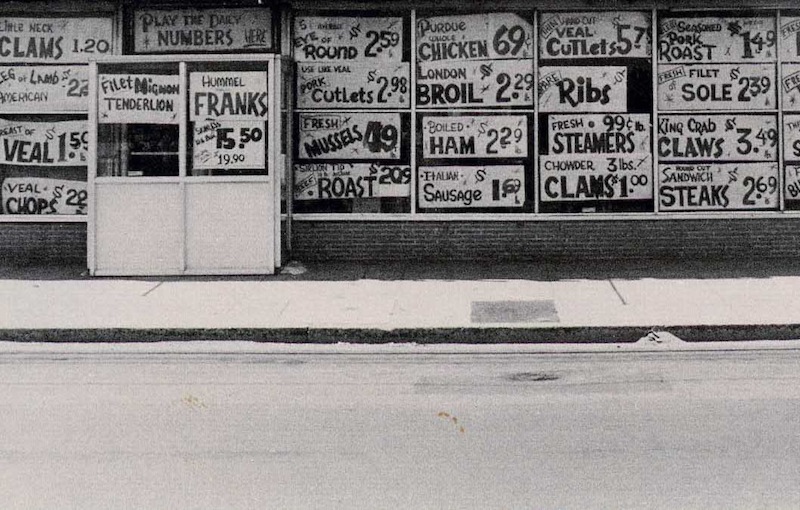
Exposure
Rick Poynor|Exposure
Exposure: Andy’s Food Mart by Tibor Kalman and M&Co
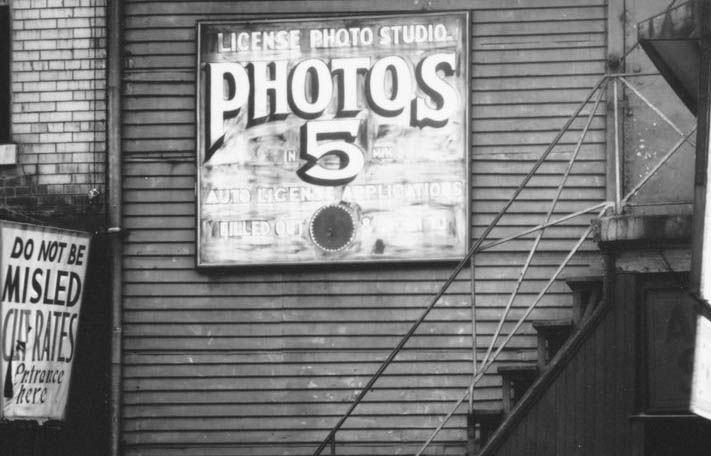
Exposure
Rick Poynor|Exposure
Exposure: License Photo Studio by Walker Evans
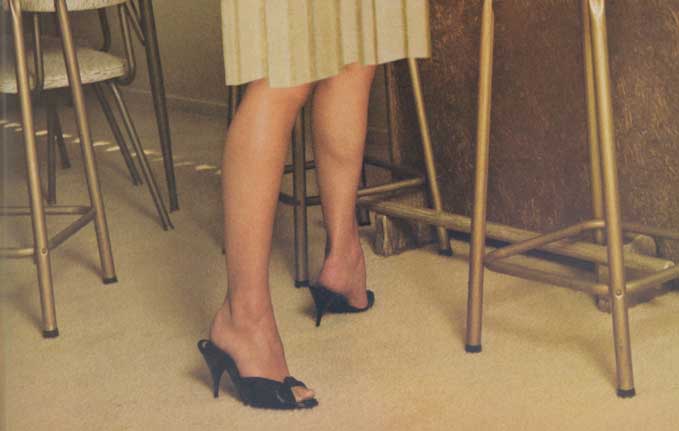
Arts + Culture
Rick Poynor|Exposure
Exposure: Drape (Cavalcade III) by Eva Stenram
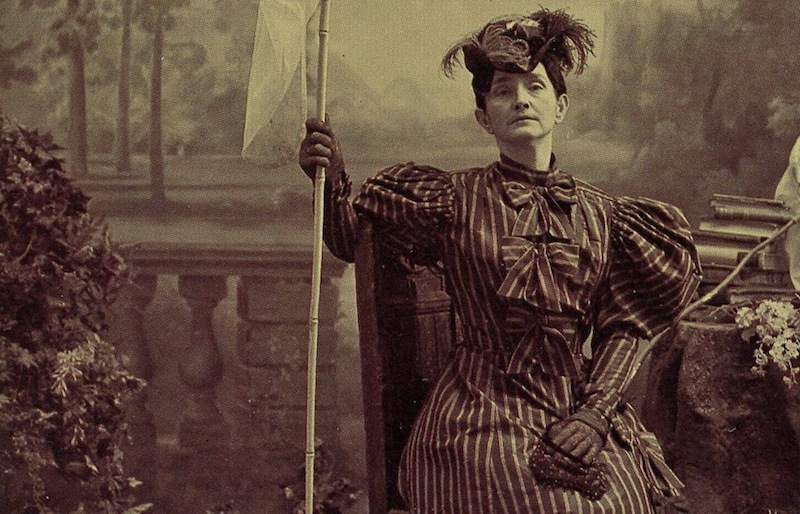
Arts + Culture
Rick Poynor|Exposure
Exposure: Mrs. E.N. Todter by Dion & Puett Studio
Related Posts

Exposure
Rick Poynor|Exposure
Exposure: Andy’s Food Mart by Tibor Kalman and M&Co

Exposure
Rick Poynor|Exposure
Exposure: License Photo Studio by Walker Evans

Arts + Culture
Rick Poynor|Exposure
Exposure: Drape (Cavalcade III) by Eva Stenram

Arts + Culture
Rick Poynor|Exposure

 Rick Poynor is a writer, critic, lecturer and curator, specialising in design, media, photography and visual culture. He founded Eye, co-founded Design Observer, and contributes columns to Eye and Print. His latest book is Uncanny: Surrealism and Graphic Design.
Rick Poynor is a writer, critic, lecturer and curator, specialising in design, media, photography and visual culture. He founded Eye, co-founded Design Observer, and contributes columns to Eye and Print. His latest book is Uncanny: Surrealism and Graphic Design.